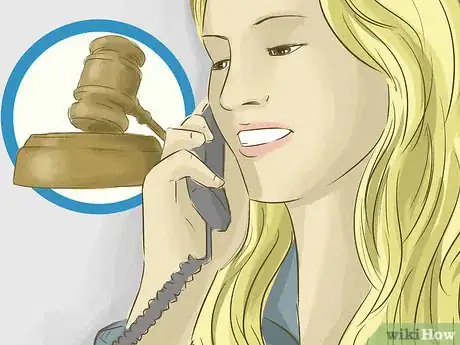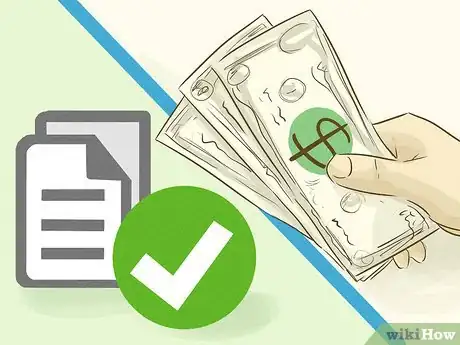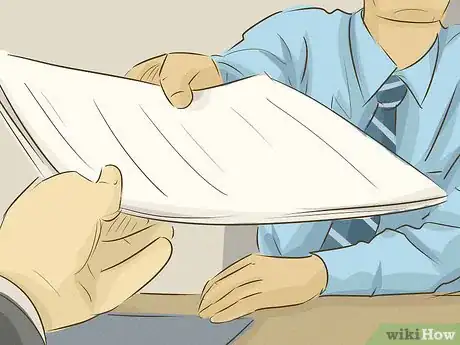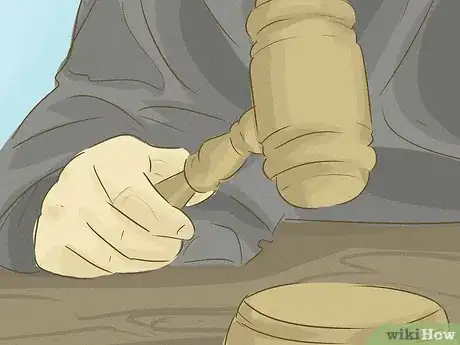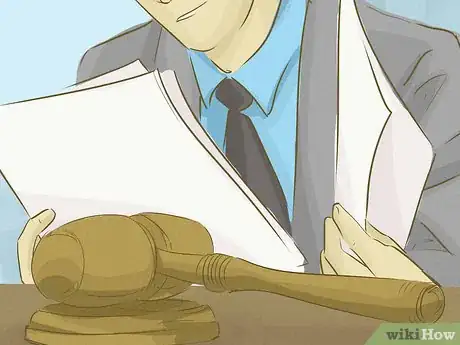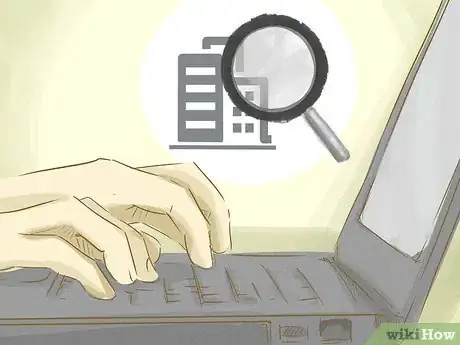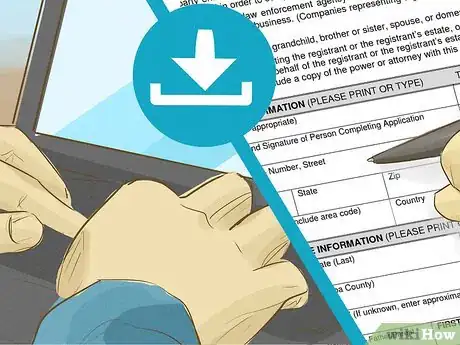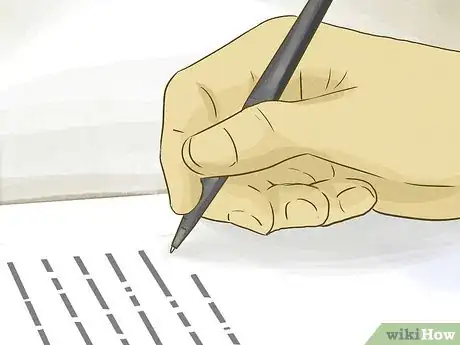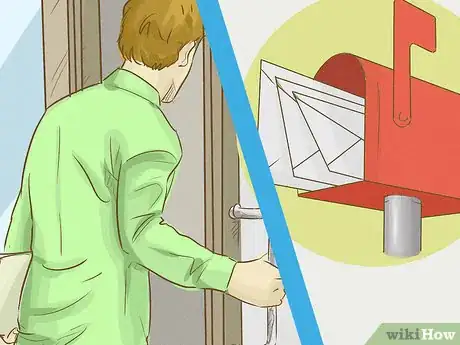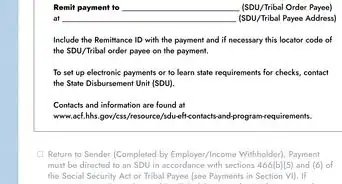This article was co-authored by Clinton M. Sandvick, JD, PhD. Clinton M. Sandvick worked as a civil litigator in California for over 7 years. He received his JD from the University of Wisconsin-Madison in 1998 and his PhD in American History from the University of Oregon in 2013.
There are 8 references cited in this article, which can be found at the bottom of the page.
This article has been viewed 47,597 times.
When individuals are incarcerated and have children under 18 years old, those children will need financial assistance that would usually comes from the parents. After incarceration, the responsibility usually falls on legal guardians to do this. However, to be clear, the parents are still obligated to financially support the child regardless of your appointment as legal guardian (however they may not be able to do so).[1] Whether the child is in the state's custody or a relative's custody, you might consider becoming the child's legal guardian so you can financially support the child. As the child's legal guardian, you will be responsible for the child's well-being until they can be reunited with their parent(s). If you become the child's legal guardian but do not have the funds to financially support the child, you may be able to get help from the government or the child's parents.
Steps
Applying for Guardianship
-
1Hire an attorney. If you want to become a child's legal guardian in order to assist the child financially while one or both of his or her parents are incarcerated, you should talk about your options with a lawyer. When searching for an lawyer, contact your state bar's lawyer referral service and ask for help finding a qualified family law lawyer. The state bar representative will ask you a few questions and will give you the names and contact information of qualified lawyers in your area. Call each candidate and set up an initial consultation. Hire the attorney you feel most comfortable with. While you do not need an attorney to receive legal guardianship, it may be advantageous if:[2]
- The child has a lot of property worth a large amount of money
- You live outside the state you are seeking guardianship in
- One or both parents are contesting the guardianship
- The child has special needs
- The child is a Native American (because federal laws will apply)
-
2Consider your options with your lawyer. When you talk with each lawyer, they may discuss a variety of options for taking care of the child. While each option will have its benefits and drawbacks, legal guardianship is the best option for offering you financial opportunities to help care for the child. Some of the options include:
- If Child Protective Services does not become involved in the family's case (i.e., the child was not removed from the parents custody by the state), the parent will usually be able to arrange for the child's care on their own. The parent may ask you to be a caregiver, which is only an option if you are a relative of the child. In addition, a caregiver can only make schooling decisions and it only lasts for one year.
- The parent may also sign a power of attorney making you the child's caregiver. If you are an immediate relative you may be able to get financial assistance. If you are not, the state may not be able to help you and the child financially.
- If you want to get a court involved, you should ask for legal guardianship, which will transfer the legal rights of the child to you. A legal guardian can be a relative, friends, or foster parent. The parent's rights will be suspended but not terminated. When the parent gets out of prison, they will hopefully be able to reunite with their child. As the child's legal guardian, you will be eligible for many financial opportunities to help you.
Advertisement -
3Find the appropriate forms. If you decide that applying for legal guardianship is the best option for you and the child, you will need to retrieve the correct court forms. Most court forms can be found online by visiting your state court's website. If you cannot find and download the forms online, call or visit your local courthouse. In general, you will need the following forms to apply for legal guardianship:[3]
- A petition for appointment of a guardian
- A child information attachment
- A notice of hearing
- A consent form
- A duties form
-
4Fill the forms out. Each of the required forms will need to be filled out completely and accurately in order to give yourself the best chance of becoming the child's legal guardian. If you hired a lawyer, he or she will help you with this. If you are doing it on your own, each form will need to contain the following information:
- In the petition, you will need to provide your personal information, a statement to the effect that you want to be the child's guardian, whether you are related to the child or not, information about the child, and the reasons why guardianship is necessary (i.e., because one or more parents are incarcerated).[4]
- The child information attachment is a detailed story of the child you are trying to become the guardian of. It will help the court determine if you are the best choice for legal guardian and if the court can even hear the case. You will need to tell the court about the child, including whether the child is Native American, receiving public assistance, and whether they are adopted. In addition, you will need to list the relatives of the child and explain why you would be the best choice.[5]
- The notice form is what you will give to the other parties in your case so they are aware of the legal action being taken. It will include your information as well as information about the case.[6]
- A consent form should be given to the parents of the child. If they sign the consent form they are basically agreeing that you should be the guardian of the child.[7]
- A duties form will outline all of the duties you will have as the child's guardian. You will need to read through it and sign the bottom.[8]
-
5File your forms. When all of your forms are filled out, take them to your local courthouse and file them with the clerk. Before you arrive, make sure you know how many copies of your lawsuit you are required to make. Most courts will ask for the original plus three copies. One copy will be served on the other party, one copy will be yours to keep, and the other copy and originals will be left with the court. You may need to make more copies if there are multiple parties you have to serve.
- In order to complete the filing, you will have to pay a filing fee. The fees will vary depending on where you file but it will usually be around $100-$200.
- After you pay the filing fee, your lawsuit will be stamped "filed" and you will have successfully started the guardianship case.[9]
-
6Serve other parties. After filing your lawsuit, you will have to notify all of the other parties that you have filed it. Anyone over the age of 18 that is not involved in the case can complete the service for you. When this person serves the other parties, they will give them copies of your lawsuit along with a notice form, which you already filled out. You will have to notify relatives, interested state agencies, and other parties that may have an interest in the case.
- The server can complete their duty by personally handing the party your lawsuit or by sending it to them in the mail. If a party cannot be found, document your attempts and submit that information to the court. The judge will look over your attempts and determine whether you can move ahead with out notifying that person.[10]
-
7Get completed proof of service forms. When the server serves each party, the server will fill out and sign a proof of service form. Those forms must be filed with the court to prove you notified all the parties. If one or more parties agree with the lawsuit and think you should be guardian, you can ask them to sign a consent and waiver form. If they sign this form, they are agreeing with your case and asking not to be notified of further actions.[11]
-
8Meet with the investigator. After all of the parties have been notified and before the official court hearing, a court or agency investigator will be assigned to your case. This investigator will interview you, the child, and all other interested parties. The investigator will try and determine if there is a need for a guardian, and if so, if you are a good choice. He or she will look at where you live, what school district you are in, your family situation, and your healthcare issues.
- After the investigator completes their investigation, they will make a recommendation to the court. This recommendation will tell the judge if you are a good guardian candidate, whether there are concerns, and whether any other action should be taken prior to appointing you guardian (e.g., counseling, emergency screenings, mediation).[12]
-
9Go to your court hearing. When the day of your court hearing arrives, make sure you bring the child, a copy of your lawsuit, and a blank order form for the judge to fill out. Make sure you get to the hearing early so you have time to park and get through security. During the hearing the judge will:
- Ask you why you want to be the child's guardian. You should explain that the child needs financial support and the parent(s) cannot give it because one or more of them are in prison. You should tell the court how well you know the child and you should be able to prove that a majority of people involved want you to be the guardian.
- Ask other interested parties for their opinions. If they agree with your case you shouldn't have much of an issue. However, if one or more parties is taking issue with your case, the judge will listen to their reasoning.
- Ask the child for their input, if the child is old enough.[13]
-
10Wait for the judge's decision. When the judge has heard all of the evidence, he or she will make a decision. If the judge decides in your favor, you will be appointed the legal guardian of the child. As legal guardian, you will have the ability to financially care for the child and help the child apply for and receive other financial assistance where necessary.
- When the judge rules in your favor, he or she will hand you a completed order. This order will need to be filed with the court.[14]
Acquiring Child Support
-
1Find your state’s agency that handles child support. Even though you are now the child's legal guardian, the parent(s) still have a responsibility to provide financial support where possible. The parent's financial obligations do not end because they are incarcerated. While that parent's income source has been cut off, they may still have assets available for the child. In addition, while one parent may be in prison, the other parent may be able to provide support.
- As the child's legal guardian, you will need to help the child fight for the assistance they need. Start by locating your state's agency that handles child support. For example, in Wisconsin, you will contact the Department of Children and Families.
-
2Find the child support request form for guardians. To apply for child support on behalf of the child, you will need to track down the specific form for applying as a guardian. If you cannot find the form online, call your state agency or visit them in-person. In Wisconsin, the form can be found and downloaded online.
-
3Fill out the form. The Guardian's Application for Child Support Services form will be used to start the child support process. The information you provide will help the state agency in charge find and collect the money the child deserves. In general, you will be required to provide the following information on your form:
- Your information as the guardian. This will include your name, address, date of birth, and information about your job and income.
- Information about the child's father and mother. You will include their names, addresses, and other identifying information that will help the state track them down. If you do not know where the either of them are, you can provide a physical description to help the state.
- Information about the child. This will include all of the identifying information including their name and Social Security number.
- Proof that you are the legal guardian. All you will need to do is attach the court order the judge provided you.
-
4Submit the form and pay the filing fee. When you complete the form, mail it to your state agency or drop it off in-person. The state agency will review your application and get back to you if anything else is needed. In Wisconsin, you will be charged a $25 fee once you receive the first $500 in support payments from a parent. The fee will be taken out automatically.
-
5Wait for a determination. Once your state agency has reviewed your application, they will make a determination regarding how much child support you should be owed and who will have to pay. While the parent in prison may not be able to pay much, the other parent may. In either case, the state agency in charge will have the ability to garnish wage and take other steps necessary to ensure the child gets the financial support needed from his or her parents.
Getting Temporary Assistance for Needy Families (TANF)
-
1Determine if you are eligible. TANF is designed to help financially support needy families. The federal government gives states grants to create and maintain these programs. Therefore, you will apply for support through your state. For example, in California, you would apply through the Department of Social Services (the program is called CalWORKS). General eligibility will be based on your and your child's citizenship, age, income, resources, and assets. Specifically to you as a legal guardian, assistance is usually available to children who have been deprived of parental support because of the absence of a parent or parents.[15]
- You can assess your initial eligibility by looking at the requirements the state agency lays out. Some states will offer a quick questionnaire that will help you assess this possibility as well. For example, in California, you can take a 15 minute survey that will ask you talk about your home life, your income, your costs, and your debts.
-
2Contact your county’s social services agency. If you think you may be eligible to receive public welfare to help the child, contact your specific county's social services agency to start the process. They will inform you of the process and how it will need to be completed. When you contact them, ask about the steps and how you can give yourself the best chances of success.
-
3Gather the documents you need to apply. Before you apply for benefits, you will need to gather important documentation that proves you need assistance. While each state will have different requirements, you will generally need to gather the following documents before starting your application:[16] [17]
- Your Social Security number and that of the child
- Proof of citizenship
- Pay stubs
- A list of property you own
-
4Apply online or in-person. When you are ready to apply, you can usually do so either online or in-person. If you apply in-person, the welfare office will set up an interview with a case worker. When you sit down with the case worker, that person will obtain facts and verify eligibility. During the interview you will be advised of the rules you must meet in order to be and stay eligible.[18]
- If you are applying online, the questions you will have to answer will be similar to those you would have to answer in-person. Once you complete the application, you will submit it online and wait for a determination.
-
5Get your monthly check. If you are found eligible for assistance, the state will send you a monthly check until you are found ineligible. Remember, this money needs to be used to support the child you are now the guardian of. You should not use this money in any other way.
References
- ↑ http://www.courts.ca.gov/documents/gc248.pdf
- ↑ http://www.courts.ca.gov/1212.htm
- ↑ http://www.courts.ca.gov/1212.htm
- ↑ http://www.courts.ca.gov/documents/gc210p.pdf
- ↑ http://www.courts.ca.gov/documents/gc210ca.pdf
- ↑ http://www.courts.ca.gov/documents/gc020.pdf
- ↑ http://www.courts.ca.gov/documents/gc211.pdf
- ↑ http://www.courts.ca.gov/documents/gc248.pdf
- ↑ http://www.courts.ca.gov/1212.htm
- ↑ http://www.courts.ca.gov/1212.htm
- ↑ http://www.courts.ca.gov/1212.htm
- ↑ http://www.courts.ca.gov/1212.htm
- ↑ http://www.courts.ca.gov/1212.htm
- ↑ http://www.courts.ca.gov/1212.htm
- ↑ http://www.cdss.ca.gov/calworks/
- ↑ http://ssa.ocgov.com/calfresh/apply/calworks/bring
- ↑ http://www.cdss.ca.gov/calworks/
- ↑ http://www.cdss.ca.gov/calworks/


